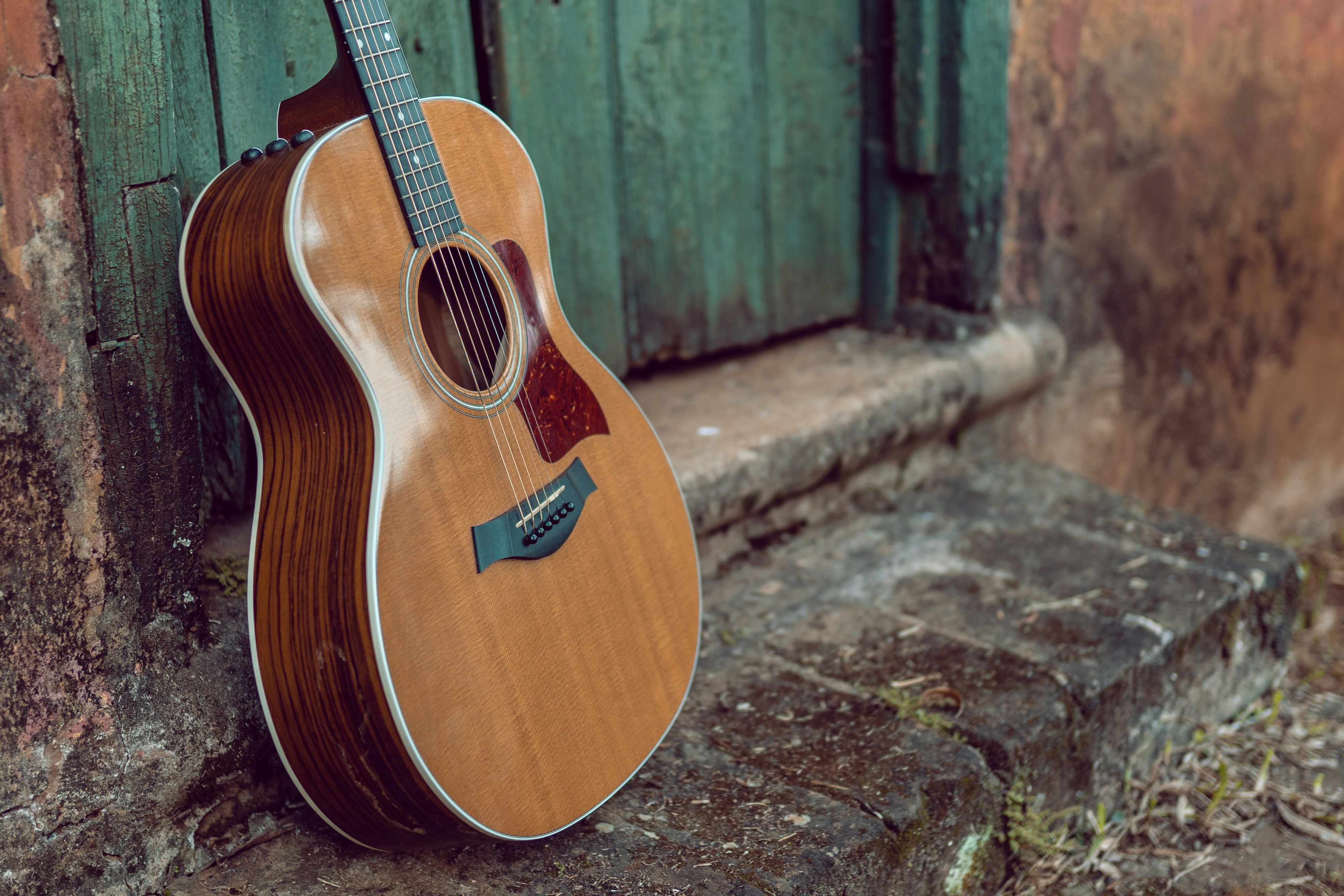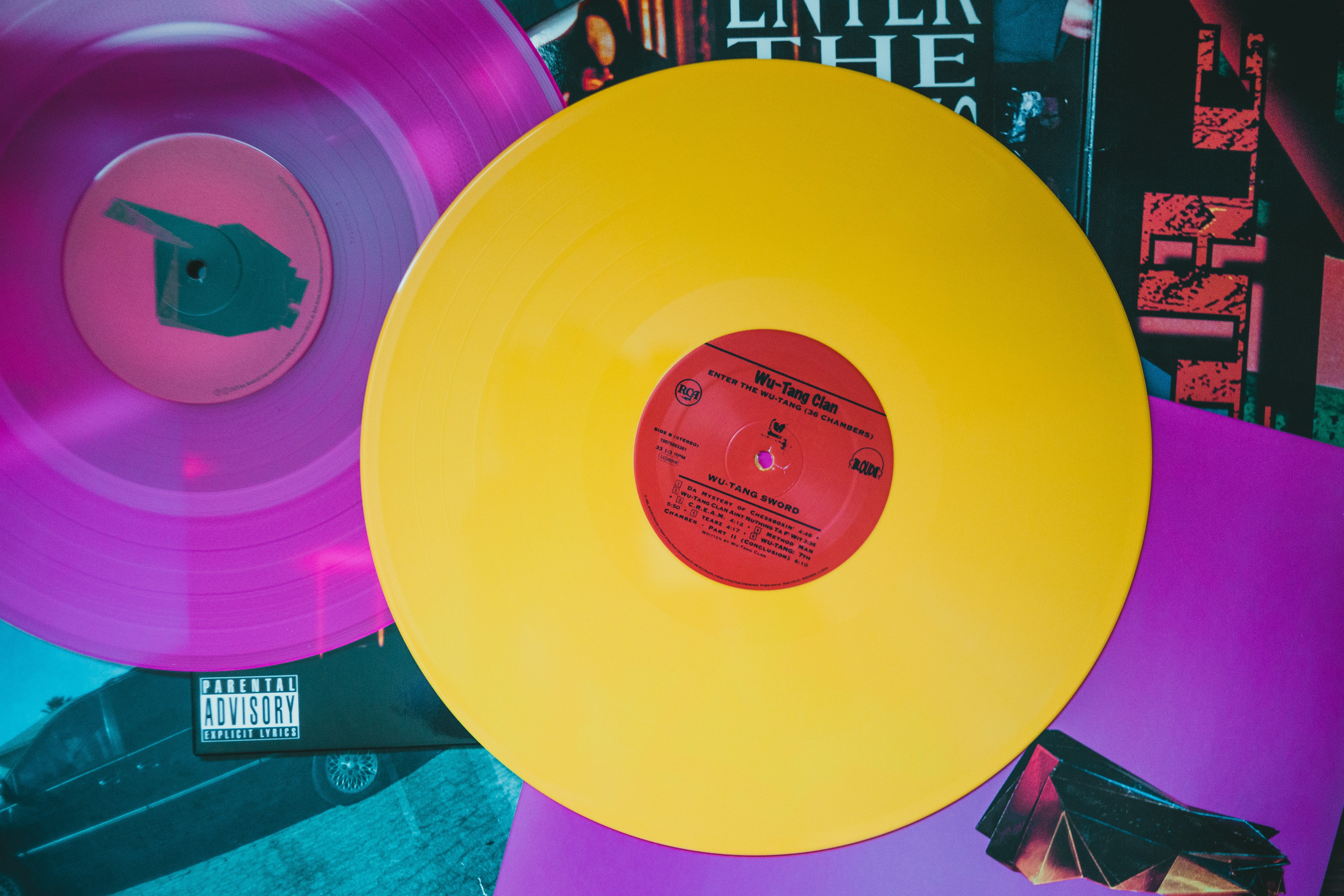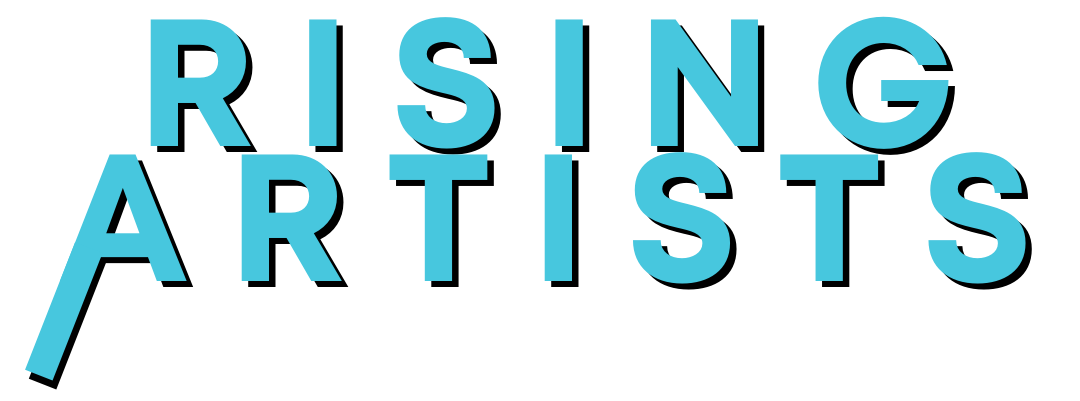Introduction
Music trends play a crucial role in shaping the ever-evolving music industry. For artists and industry professionals, understanding these trends is essential for staying relevant and making informed decisions.
In this article, we will delve into the latest music trends that are projected to make a significant impact in 2024. These trends encompass a wide range of genres and explore the advancements brought about by technology.
The Influence of Technology on Music
Technology has revolutionized both the creation and consumption of music. It has opened up new avenues for artists to experiment and connect with their audience on a global scale. From platforms like TikTok and Instagram Reels to streaming services like Spotify and Apple Music, technology has transformed how we discover, consume, and share music.
Throughout this article, we will explore various fascinating trends that are expected to shape the music industry in 2024.
Here are the trends we will cover:
- Cinematic Stings in Short-Form Videos: We’ll discuss how cinematic stings have become popular sound design elements in short-form videos, captivating viewers with their ability to create a sense of drama within a limited time frame.
- The Resurgence of Acoustic Music: We’ll talk about the resurgence of acoustic music in mainstream genres like pop and hip-hop, reflecting a desire for authenticity and intimacy in musical experiences.
- The Rise of Comedy Songs: We’ll explore the rising popularity of comedy songs, examining how comedic elements are resonating with audiences during times of global uncertainty.
- The Evolution of Sampling: We’ll delve into the evolution of sampling, where artists are pushing boundaries by incorporating everyday sounds and obscure recordings into their work.
- The Fusion of Jazz, Soul, and Electronica: We’ll discuss the fusion of jazz, soul, and electronica, blurring genre boundaries and redefining contemporary soundscapes.
- Personalized Music Experiences and Genre Fluidity: We’ll dive into personalized music experiences and the culture of genre fluidity, examining how streaming platforms and algorithmic recommendations have facilitated a more open-minded approach to music consumption.
- The Revival of Tangible Music Formats: Lastly, we’ll talk about the surprising revival of tangible music formats like vinyl records and cassettes in a digital streaming-dominated era.
For each trend, we will provide examples and discuss their impact on the music industry. So let’s dive in!
1. Cinematic Stings in Short-Form Videos
Cinematic stings are widely used in short videos like TikTok and Instagram Reels as a key sound design element. They have completely changed the way we enjoy short-form content. By creating a feeling of excitement, cinematic stings manage to grab the attention of viewers within a very short span of time.
One of the reasons why short-form videos have become so popular is because they are able to tell a story in a concise manner. And this is where cinematic stings play a crucial role. They help in enhancing the narrative of these videos, making them more interesting and engaging.
Here are some ways in which successful short-form videos make use of cinematic stings:
- Creating Emphasis: Cinematic stings are often used to highlight important moments or actions in a video. This could be a punchline in a comedy skit or a surprise reveal in a tutorial video.
- Building Suspense: By using suspenseful cinematic stings, creators can keep viewers hooked and eager to find out what happens next.
- Setting the Mood: Different types of cinematic stings can evoke different emotions. Creators leverage this by choosing the right sound design to match the overall tone of their video.
It’s fascinating to see how TikTok creators, for example, have embraced this trend and found innovative ways to incorporate cinematic stings into their content. Whether it’s adding a dramatic pause before a funny moment or using intense music to heighten anticipation, these small audio details can make a big impact.
“Cinematic stings have become an essential tool for creators looking to make an impact with their short-form videos.”
2. The Comeback of Acoustic Music

In the past few years, we’ve seen a significant increase in the love for acoustic music, especially in popular genres like pop and hip-hop. This change towards acoustic sounds can be attributed to several reasons:
- Realness and Intimacy: In a time where most songs are heavily produced, people are craving something more real and personal. Acoustic music has the power to create an unfiltered and emotional connection with listeners, making them feel closer to the artist and the lyrics.
- Mixing Old with New: The resurgence of acoustic music also comes from a sense of longing for the past. Many people appreciate the simplicity and rawness of acoustic performances, reminding them of a time when music was less polished and more authentic. But this trend isn’t just about looking back; it also incorporates modern elements to stay current.
Independent artists have been quick to use this acoustic sound to stand out in a digital world that’s often filled with highly produced tracks. With just their voice and an acoustic instrument, these artists can create powerful performances that grab attention online.
Platforms like YouTube and Spotify’s playlists have played a big part in helping people discover new acoustic talents. They give artists a chance to show off their skills and connect with larger audiences who enjoy this type of music.
The love for acoustic music is clear in recent hits like Ed Sheeran’s “Thinking Out Loud” and Lewis Capaldi’s “Someone You Loved.” These songs have struck a chord with listeners, showing that acoustic music still has a strong impact today.
This renewed interest in acoustic music shows how people’s preferences are changing as they look for more genuine and meaningful musical experiences. As we head into 2024, we can expect to see even more up-and-coming artists embracing the acoustic sound and captivating audiences with their talent and authenticity.
3. The Growing Popularity of Comedy Songs
Comedy songs have become increasingly popular with audiences, especially during uncertain times. These fun and light-hearted musical creations offer a much-needed escape and bring happiness to listeners. Let’s take a closer look at why funny elements in music have been so well-received:
1. Various Forms of Comedy
Comedy songs come in different shapes and sizes, including:
- Clever lyrics that deliver witty punchlines
- Playful sound effects that add humor to the music
Artists are using comedy as a tool to connect with their audience on an emotional level and create memorable experiences. This phenomenon is not limited to music alone; it extends to other forms of entertainment as well. For instance, stand-up comedians like Sebastian Maniscalco have mastered the art of blending humor with serious topics, making their performances all the more relatable.
2. The Power of Viral Comedy
Thanks to social media sharing and meme culture, comedy songs now have a new path to success. Tracks like “Old Town Road” by Lil Nas X or “The Fox (What Does the Fox Say?)” by Ylvis went viral online, spreading rapidly and capturing listeners with their catchy tunes and amusing lyrics.
3. A Relief from Seriousness
In today’s complex world, comedy songs offer a much-needed break from the seriousness of everyday life. They provide light-hearted entertainment and allow listeners to momentarily forget their worries while enjoying a good laugh. However, it’s important to recognize that funny people are not always taken seriously, despite their ability to bring joy and laughter into our lives.
Comedy songs have proven to be a hit among audiences, offering a refreshing and enjoyable musical experience. As artists continue to explore this genre, we can expect more humorous tracks that bring smiles to our faces and uplift our spirits.
4. The Evolution of Sampling: Real-Life Sounds and Lesser-Known Samples
In the world of music production, sampling has become an integral part of the creative process. Artists have been pushing the boundaries of traditional sampling by incorporating everyday sounds and obscure recordings into their work. This trend of using more unique and diverse samples has opened up new creative opportunities for musicians across genres.
The Power of Real-Life Sounds
The use of real-life sounds in music adds a layer of authenticity and intrigue to a song. For example, in Billie Eilish’s hit track “Bad Guy,” the sound of a dental drill was sampled to create a distinct and unexpected sound effect. This unconventional sample not only adds character to the song but also showcases the artist’s willingness to experiment with different sonic elements.
Copyright Challenges and Responsibilities
However, this trend also presents copyright challenges as artists navigate the legalities surrounding sample clearance. Using real-life sounds or lesser-known samples can sometimes raise issues if proper permissions are not obtained. Artists must be mindful of copyright laws and seek permission or licenses when using samples from other artists or sources.
Innovation Through Sampling
Despite these challenges, the evolution of sampling has given rise to some truly innovative approaches in music production. Take, for example, Kanye West’s “Bound 2,” which samples Brenda Lee’s “Sweet Nothin’s” for its iconic soulful hook. By blending elements from different eras and genres, artists can create unique sonic landscapes that captivate listeners.
The evolution of sampling in music has brought about a fascination with real-life sounds and lesser-known samples. While it provides creative opportunities for artists, it also presents copyright challenges that need to be navigated carefully. Nonetheless, this trend continues to shape the music industry by pushing boundaries and encouraging experimentation.
5. Blurring Genres: The Fusion of Jazz, Soul, and Electronica
In recent years, there has been a noticeable trend in music where artists are breaking free from traditional genre boundaries and creating unique blends of styles. One particular fusion that has gained significant attention is the combination of jazz, soul, and electronica. This merging of genres has resulted in a fresh and innovative sound that is captivating listeners worldwide.
The Rise of Jazz/Soul/Electronica Hybrids
Jazz/soul/electronica hybrids are characterized by their incorporation of elements from all three genres. They seamlessly blend the improvisation and complex harmonies of jazz, the emotive vocals and heartfelt lyrics of soul, and the electronic beats and production techniques of electronica.
This genre-blending movement is not only limited to individual artists but also extends to collaborative projects and bands. Musicians from different backgrounds are coming together to create music that transcends traditional labels and appeals to a wide range of audiences.
Redefining Contemporary Soundscapes
The fusion of jazz, soul, and electronica is reshaping the musical landscape in several ways:
- Pushing Boundaries: By combining diverse musical influences, artists are pushing the boundaries of what is considered “mainstream” or “popular” music. They are challenging conventional norms and introducing new sonic possibilities.
- Creating Emotional Depth: Jazz, soul, and electronica are known for their ability to evoke emotions. When merged together, they create a rich tapestry of sound that can convey a wide range of feelings – from melancholy to euphoria.
- Embracing Technology: Electronica’s emphasis on electronic instruments and production techniques brings a futuristic element to this fusion. It showcases how technology can be used as a tool for artistic expression.
- Celebrating Tradition: Despite incorporating modern elements, jazz/soul/electronica hybrids also pay homage to their roots. They honor the traditions and legacies of each genre while infusing them with contemporary elements.
Key Artists in the Jazz/Soul/Electronica Fusion Movement
Several artists have played a pivotal role in shaping and popularizing this hybrid genre space. They have fearlessly experimented with different sounds, paving the way for future musicians to explore similar paths. Some notable figures include:
- Robert Glasper: A Grammy-winning pianist and producer who seamlessly blends jazz, R&B, and hip-hop influences in his music. His albums Black Radio and Black Radio 2 are prime examples of jazz/soul/electronica hybrids.
- Hiatus Kaiyote: Hailing from Australia, this neo-soul band incorporates elements of jazz, funk, and electronica into their music. Their unique sound has garnered critical acclaim and a dedicated fanbase.
- Flying Lotus: An experimental electronic producer known for his genre-defying compositions. His albums often feature collaborations with jazz musicians and showcase a fusion of electronic and organic sounds.
- Thundercat: A bassist, singer, and songwriter who effortlessly combines jazz fusion, funk, soul, and electronica in his work. His virtuosic playing style and introspective lyrics have earned him widespread recognition.
These artists serve as trailblazers in the world of jazz/soul/electronica hybrids, inspiring others to embrace musical exploration and defy genre conventions.
“The beauty of blending genres is that it allows us to tap into different emotions and create something truly unique.” – Robert Glasper
6. Personalized Music Experiences: Exploring Genre Fluidity
The rise of streaming services and personalized recommendations has led to a paradigm shift in how we consume music. Instead of being confined to one genre, listeners are now more open to exploring diverse styles and sounds. This has created opportunities for artists to reach new audiences, but it has also presented challenges when it comes to marketing and categorizing their music.
Here are some key points to consider:
- Streaming platforms use algorithms to analyze user data and make personalized recommendations based on individual preferences.
- These recommendations often suggest songs or artists from different genres, encouraging listeners to step outside their comfort zones.
- As a result, the traditional boundaries between genres are becoming blurred, with many artists embracing a more eclectic approach to their music.
- While this shift towards genre fluidity can be liberating for both artists and listeners, it also raises questions about how we define and classify music. A recent study highlights this paradigm shift and its implications.
- From a marketing perspective, labels and promoters may struggle to effectively target specific audiences if the music defies traditional genre conventions.
Overall, the growing popularity of personalized music experiences highlights the evolving nature of our relationship with music. It’s no longer just about finding songs that fit into pre-defined categories; it’s about discovering unique and meaningful connections through sound.
7. The Unexpected Return of Vinyl and Cassettes: Why Physical Music Formats Are Making a Comeback

In today’s digital age, where streaming platforms dominate the music industry, it’s surprising to see a growing interest in old-school formats like vinyl records and cassettes. But this revival isn’t just a passing trend – it’s a testament to the enduring appeal of tangible music experiences.
The Allure of Nostalgia
One of the key factors driving the demand for physical music is nostalgia. Many music lovers who grew up in the era of vinyl records or cassettes have fond memories associated with these formats. From browsing through record stores to carefully curating their cassette tape collections, these activities were an integral part of the music discovery process.
The Thrill of Collecting
Another reason behind the resurgence of vinyl and cassettes is the thrill of collecting. For dedicated fans and collectors, owning physical copies of their favorite albums goes beyond simply listening to the music – it’s about building a curated collection that reflects their musical taste and personality.
The Intersection of Artistry and Technology
While nostalgia and collectibility play significant roles in the popularity of vinyl and cassettes, there’s also an interesting connection between these analog formats and modern technology. With the rise of home recording equipment, artists now have the ability to blend both analog warmth and digital convenience in their music production process.
“Vinyl has become the ultimate lo-fi medium for people who want to make high-quality recordings.” – Steve Albini, American musician and record producer
By using analog instruments and recording techniques alongside digital tools, musicians can create a unique sonic experience that combines the best of both worlds. This hybrid approach allows for greater artistic expression while still leveraging the advantages of modern technology.
Embracing the Tangible
In a world where everything seems to be shifting towards intangible digital experiences, the resurgence of vinyl and cassettes serves as a reminder of the value of physicality. Holding a vinyl record in your hands, carefully placing the needle on the groove, or flipping a cassette tape – these actions create a sense of connection and engagement with the music that streaming simply can’t replicate.
While digital streaming offers unparalleled convenience and access to a vast library of music, it’s this very abundance that can sometimes feel overwhelming. Physical formats, on the other hand, provide a more curated and intentional listening experience. Each album becomes a deliberate choice, deserving of dedicated time and attention.
“Vinyl is more of an art piece than a disposable product.” – Jack White, American musician and record producer
In an age where everything is instant and disposable, the resurgence of vinyl and cassettes represents a longing for something tangible and meaningful. It’s a testament to the enduring power of music as not just a sound but also an experience – one that can be held, cherished, and passed down through generations.
9. Exploring Emerging Music Markets in the Digital Age
In recent years, there has been a significant growth in emerging music markets around the world. Regions such as the Middle East & North Africa, Sub-Saharan Africa, Asia, and Latin America are experiencing a surge in music consumption and production. This presents both opportunities and challenges for artists, record labels, and streaming platforms.
The Rise of Music Streaming in Emerging Markets
One of the key drivers behind this growth is the increasing popularity of music streaming services in these regions. With the advent of affordable smartphones and improved internet connectivity, more people now have access to digital music platforms. This has led to a shift in how music is consumed, with streaming becoming the primary mode of listening for many individuals.
Opportunities for Artists and Record Labels
For artists and record labels, these emerging markets offer a chance to expand their fan base and reach new audiences. By tapping into local music scenes and collaborating with regional artists, they can create unique cross-cultural experiences that resonate with listeners.
Additionally, these markets present an opportunity for revenue growth through licensing and distribution deals. As streaming services continue to expand their presence in these regions, there is a growing demand for localized content. This opens up avenues for international artists to license their music for use in advertisements, films, and TV shows.
Challenges in Emerging Music Markets
While there are immense opportunities, there are also challenges that come with operating in emerging music markets:
- Infrastructure: Limited internet infrastructure and slow connection speeds can hinder the adoption of streaming services.
- Payment Systems: In some regions, traditional banking systems may not be readily accessible, making it difficult for users to subscribe to paid streaming plans.
- Piracy: Copyright infringement remains a major issue in certain emerging markets, where unauthorized downloading and sharing of music is prevalent.
The Impact of Cultural Influences
One of the most exciting aspects of this global music shift is the emergence of unique cultural influences and sounds. Artists from these regions are blending traditional elements with contemporary styles, creating a fusion that reflects their identity.
For example, genres such as Afrobeats from West Africa, K-pop from South Korea, and Reggaeton from Latin America have gained international popularity in recent years. These genres not only showcase the talent of local artists but also introduce audiences worldwide to new sonic experiences.
Embracing Diversity in the Music Industry
As the music industry becomes more interconnected, it is crucial to embrace diversity and promote inclusivity. By recognizing and supporting artists from different regions, we can foster a more vibrant and inclusive music ecosystem.
“Music is a universal language that transcends borders. It has the power to bring people together and celebrate our shared humanity.” – [Insert Name], Musician
By exploring emerging music markets and celebrating the diverse voices within them, we can create a more dynamic and inclusive global music community.
Conclusion
As we look ahead to the music industry landscape of 2024, it’s clear that change and innovation will continue to shape the way we create, consume, and experience music. Embracing the latest music trends can provide artists and industry professionals with valuable insights and opportunities for growth. Here are some key takeaways to keep in mind:
- Stay true to your artistic vision: While it’s important to stay informed about the latest trends, it’s equally important to stay true to your unique style and artistic vision. Use the trends as inspiration rather than trying to conform to them.
- Leverage the identified trends: Incorporate the identified trends into your creative process, marketing strategies, and live performances. For example, consider using cinematic stings in your short-form videos or exploring genre-blending between jazz, soul, and electronica in your compositions.
- Build a strong community: The music industry is all about connections and collaborations. Build a strong network of fellow musicians, producers, and industry professionals who can support and guide you on your journey.
- Stay adaptable: The music industry is constantly evolving, and it’s important to stay adaptable to new technologies and trends. Keep an eye out for emerging technologies like AI in music creation or new monetization methods that can help you reach a wider audience.
All in all, the latest music trends for 2024 offer exciting possibilities for artists and industry professionals. By embracing these trends while staying true to their artistic vision, musicians can navigate the dynamic music industry landscape of 2024 with confidence. So go ahead, experiment with new sounds, collaborate with diverse artists, and let the trends inspire you on your musical journey!
Keep your finger on the pulse of emerging technologies and platforms, constantly seeking ways to leverage them in your career. By staying adaptable and open-minded, you can seize the opportunities that arise from these trends and carve out a unique space for yourself in the ever-evolving world of music. So, let your passion guide you, stay connected with your audience, and embrace the future of music with open arms.











